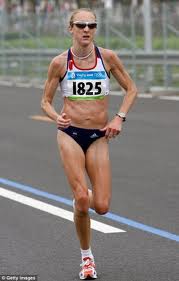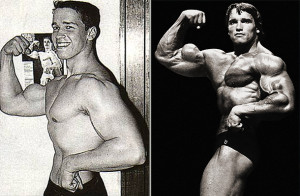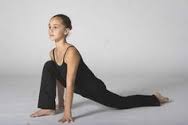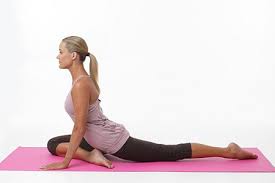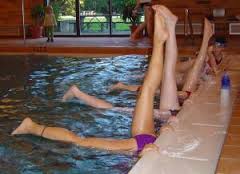There are many processes that occur in the body at a cellular level on a daily basis. These processes include metabolism, cellular respiration, the transport of oxygen around the body and muscle contractions. The different body types all have advantages and disadvantages when it comes to how efficient their bodies are at the processes listed previously.
2.1 Metabolism
“Metabolism is the chemical process that takes place within the cells for the purpose of sustenance of life- grow, reproduce, repair, transportation of nutrients, maintenance from wear and tear etc under various environmental factors like external stress, exertion or injury. To perform all these activities the cellular energy is generated when a molecule called ATP (Adenosine Triphosphate) is broken down into ADP (Adenosine Diphosphate) and one phosphate molecule, while releasing energy.” (Sayan. (2014, June 23)) Metabolism is broken down into two processes which are catabolism and anabolism. Your body is producing energy in the catabolic process which means that when an athlete is working out and using lots of energy their body has higher catabolic levels when compared with regular levels. Anabolism is the opposite of this and is the repairing of your body after doing a hard workout or training period. This phase is when your muscle fibres grow thicker and the athlete gains muscle mass and strength, provided that the necessary nutrition is being taken care of. (Sayan. (2014, June 23)) People have different metabolism rates that allow these two processes to go faster or slower and this can be related, to an extent, to our body type.
In an ectomorph body the metabolism rate is very high. If we look at the ectomorphic body appearance this makes sense since ectomorphs are thin with long limbs and thin faces. They have little muscle and almost no fat. This allows them to be able to develop lean and longish muscles with the assistance of good nutrition but not bulk up like other body types can. Even still they will have low body fat percent with a very lean physique. An example of this would be a marathon runner who is required to have strong enough muscles to get them through the race but don’t want to carry a lot of extra weight that may tire them out. They usually have very long levers and look very lean no matter how much muscle they try to put on. (Sayan. (2014, June 23)) (Ruiz, F. (2005))
(http://www.bioathletic.com.au/wp-content/uploads/2013/06/marathon-2.jpg)
A mesomorph however is considered to be the result of a biased genetic advantage over the other body types. Physically they have square heads, thick necks, broad and muscular chests and shoulders. They have very muscular limbs and minimal body fat. These kinds of people are able to develop muscles easily which means that their metabolism occurs at a medium rate because it is not high enough to break down all of the nutrients that are put into your body since these kinds of people don’t generally put on a lot of fat. (Sayan. (2014, June 23))
Endomorphs, however, have a slow metabolic rate with a physical appearance of a round head, barrel like torso, and shorter limbs. These athletes have muscles but they are generally covered by a layer of fat because of their slow metabolic rate. They are unable to metabolize and break down all the nutrients they consume so they store it as fat. These athletes can easily gain muscle and fat without much effort. (Sayan. (2014, June 23)) Examples of female endomorphs include Beyonce Knowles, Oprah Winfrey, and Jennifer Hudson. (http://www.directlyfitness.com/store/3-body-types-explained-ectomorph-mesomorph-endomorph/) 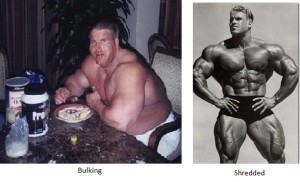
2.2 Cellular Respiration
Cellular Respiration is the catabolic process in metabolism that breaks down organic matter in order to produce energy. (Sayan. (2014, June 23)) This being said, the amount of cellular respiration completed by your body is directly dependent upon your metabolic rate and thus your body type.
Ectomorphs have a higher metabolic rate so they demand more energy coming from the ATP molecules created through cellular respiration. This means that the ectomorphs must fuel their bodies more in order to gain muscle and maintain that fueling in order to not use energy from their muscles to perform. (http://www.biology-questions-and-answers.com/cell-respiration.html) Ectomorphs’ bodies need to produce more ATP from their cellular respiration and fuel this process by consuming more in order to maintain their gained muscle mass on their slight frames. That being said this means that mesomorphs, with their more moderate metabolic rate, don’t need to eat as much in order to maintain their muscle mass since they don’t use up their ATP as quickly as ectomorphs. This allows them to keep more muscle on while eating the same as an ectomorph since they don’t use up as much energy to do the same activities. (http://www.biology-questions-and-answers.com/cell-respiration.html) For an endomorph, who has a slower metabolic rate, they need to watch their food because they don’t break down the nutrients as quickly as people with faster metabolism. This means they store more nutrients rather than using it up right away since they can’t process it as quickly.
2.3 Oxygen Transportation
Oxygen is transported through your body in your bloodstream and by the hemoglobin in your red blood cells. A single hemoglobin molecule is composed of four subunits and can bind with up to four oxygen molecules at a time. The first oxygen molecule is the hardest to bind and then the second and third ones are easier whilst the fourth is hard to bind, similar to the first one. The binding of oxygen molecules to hemoglobin can be shown in this graph of the partial pressure of oxygen in the blood (x-axis) versus the relative hemoglobin saturation in the blood (y-axis). (https://www.boundless.com/biology/textbooks/boundless-biology-textbook/the-respiratory-system-39/transport-of-gases-in-human-bodily-fluids-222/transport-of-oxygen-in-the-blood-841-12086/)
Image (https://figures.boundless.com/19662/full/figure-39-04-02.png)
2.3a Factors Affecting Oxygen Transportation
There are many factors that affect the hemoglobin’s ability to transport oxygen effectively through the bloodstream some of which include the carbon dioxide levels, the blood’s pH, body temperature, environmental factors, and diseases.
“When carbon dioxide is in the blood, it reacts with water to form bicarbonate (HCO3−) and hydrogen ions (H+). As the level of carbon dioxide in the blood increases, more H+ is produced and the pH decreases. The increase in carbon dioxide and subsequent decrease in pH reduce the affinity of hemoglobin for oxygen. The oxygen dissociates from the hemoglobin molecule, shifting the oxygen dissociation curve to the right. Therefore, more oxygen is needed to reach the same hemoglobin saturation level as when the pH was higher. A similar shift in the curve also results from an increase in body temperature. Increased temperature, such as from increased activity of skeletal muscle, causes the affinity of hemoglobin for oxygen to be reduced.
Diseases such as sickle cell anemia and thalassemia decrease the blood’s ability to deliver oxygen to tissues and its oxygen-carrying capacity. In sickle cell anemia, the shape of the red blood cell is crescent-shaped, elongated, and stiffened, reducing its ability to deliver oxygen. In this form, red blood cells cannot pass through the capillaries. This is painful when it occurs. Thalassemia is a rare genetic disease caused by a defect in either the alpha or the beta subunit of Hb. Patients with thalassemia produce a high number of red blood cells, but these cells have lower-than-normal levels of hemoglobin. Therefore, the oxygen-carrying capacity is diminished.” (https://www.boundless.com/biology/textbooks/boundless-biology-textbook/the-respiratory-system-39/transport-of-gases-in-human-bodily-fluids-222/transport-of-oxygen-in-the-blood-841-12086/)
All these factors result in the body not being able to transport as much oxygen around it to the muscle tissues to be used during muscle contractions to produce ATP, the body’s energy source. As a synchronized swimmer, having an effective respiratory system is one of the most important jobs that your body could do. In order to succeed, synchro swimmers must have exceptional breathe control and with proper training they can achieve that. If they have a disease, such as sickle cell anemia, then it hinders their body’s ability to properly circulate blood and therefore lowers their ability to properly regulate their breathing whilst performing. (Gabrilo, G., Peric, M., & Stipic, M. (2011, March 1))
The opposite of all these instances can support and assist the effective transportation of oxygen around the body. With lower levels of carbon dioxide in the blood increases the hemoglobin’s affinity for oxygen and increases the transportation around the body. The same goes for the pH and maintaining it around 7.4 which is the regular pH level for human blood. (http://www.biologyreference.com/Bl-Ce/Blood.html) These can both help increase the hemoglobin’s ability to transport the most efficient amount of oxygen to the body along with maintaining a reasonable body temperature to not reduce the affinity of hemoglobin. As for the diseases, those are mostly genetic and cannot be changed. However, trying to focus on improving capillary size and efficiency can help improve transportation of oxygen around the body and to the muscles that are contracting.
2.4 Muscle Contractions
In order to move any part of your body all the muscles needed must contract for that movement to be possible. Muscle contractions are the sliding of two filaments across each other, inwards and outwards. When contracted the thin and thick filaments are pull together so that they are beside one another and then they slide back out so that there are spaces between them when relaxed, as shown in this picture. This is called the sliding filament theory.
The thick filaments are in blue and the thin are in red. (http://study.com/academy/lesson/muscle-contraction-actin-and-myocin-bonding.html)
(http://www.enotes.com/homework-help/explain-relation-between-muscles-atp-energy-465747)
When contracting, the muscle is active and then when not contracted it is relaxed. Muscles contract even when they are not being use for exercise and are used for every little movement, from breathing to blinking.
There are two different types of fibres in muscles that contribute to the contraction of muscles. These fibre types can be altered to better equip an athlete for a certain sport. There are fast and slow twitch fibres and everyone is composed of different percentages of each which allow them to excel at certain sports more than other ones. “On average, we have about 50 percent slow twitch and 50 percent fast twitch fibers in most of the muscles used for movement” (Quinn, E. (2014, December 1)) Though some people are different and have more fibre types than others. (Quinn, E. (2014, December 1))
2.4a Slow twitch Fibres
“Slow twitch fibers (Type I): These muscle fibers can carry more oxygen and sustain longer periods of aerobic activity (activities that require your muscles to use oxygen) than other types of fibers, using fats or carbs as fuel. They can contract for long periods of time, but are weak. Think: long distance running or hours of cardio.” (http://www.nerdfitness.com/blog/2013/10/16/what-the-world-of-warcraft-can-teach-us-about-genetics/) These fibres are very useful for long activities or training periods. They are supported by aerobic systems to give them energy for the long periods of time that they are required to be working. These fibres allow the body to do continuous, extended contractions of muscles over longer periods of time. They fire off slower than the fast twitch fibres and are able to perform for longer before becoming fatigued. (Quinn, E. (2014, December 1))
2.4b Fast Twitch Fibres
“Fast twitch fibers (Type IIb): These muscle fibers can carry less oxygen and only work with short periods of anaerobic activity (activities that require your muscles to burn glycogen) before becoming exhausted. They have the greatest potential for strength and for gaining size. Think: sprinting, power lifting, strength training.
Fast twitch fibers (Type IIa): These are a mix of Type I and Type IIb fibers, and thus can be used for either aerobic or anaerobic activities.”
(http://www.nerdfitness.com/blog/2013/10/16/what-the-world-of-warcraft-can-teach-us-about-genetics/) With fast twitch fibres athletes can do sharp fast movements but only for short periods of time. These fibres are more anaerobic since they function too quickly to use oxygen effectively while performing.
2.5 Optimal Cellular Characteristics in Synchro Swimmers
The cellular characteristics discussed above can both help and hinder a synchronized swimmers ability to perform optimally. These following cellular characteristics help a synchro swimmer perform to their best ability in the pool.
Relating back to the optimal body type for a synchronized swimmer, metabolism contributes to their overall success in the sport. Synchro swimmers want to be a balance of all three body types to have the proper amount of muscle, flotation, and strength. The same goes for metabolism. They have to have the metabolic rate of a mesomorph since the metabolic rate for a mesomorph is between those of endomorphs and ectomorphs and is a medium rate. Synchro swimmers are a balance of all three body types so the two extremes of the endomorph and ectomorph body types cancel each other out in a way, leaving the medium mesomorphic rate. (Sayan. (2014, June 23)). Relating to metabolism, cellular respiration plays a part in an athlete’s performance as well. Since we are looking for a balance between the body types and a medium metabolic rate we want to be focusing on cellular respiration as it relates to the metabolic rate. Cellular respiration in a mesomorphic body requires less ATP than an ectomorphic body does to perform the same activity which means that they can work out for longer without needing as much nutrients to maintain their muscle and strength and requiring less fuel for their body to perform to the same standards as an ectomorph. (http://www.biology-questions-and-answers.com/cell-respiration.html) In order to do what these athletes do they have to be able to use as much ATP as is available while still being muscular and physically slim. Mesomorphic cellular respiration is the best option to help synchro swimmers obtain these results with the medium metabolic rate that uses ATP at a moderate rate, allowing more ATP to be created in the meantime, as well as having the metabolism to support the desired slim physical appearance while still being strong enough to perform the routines required of them.
The next cellular characteristic is oxygen transport which is a very important part of synchronized swimming. In a five minute routine synchro swimmers may spend as much as three and a half minutes cumulatively under water, sometimes being under for a minute without coming up for air. (http://www.seattlesynchro.com/SubTabGeneric.jsp?team=zzssst&_stabid_=70269) Obviously their body’s efficiency at transporting oxygen to all the different muscles in the athlete’s body is very important for this sport. That being said to optimally transport oxygen around a synchronized swimmers body the carbon dioxide levels in the blood have to be low, the pH has to be close to 7.4, and the body’s temperature has to be maintained at a healthy level as much as possible. (http://www.biologyreference.com/Bl-Ce/Blood.html, https://www.boundless.com/biology/textbooks/boundless-biology-textbook/the-respiratory-system-39/transport-of-gases-in-human-bodily-fluids-222/transport-of-oxygen-in-the-blood-841-12086/) Keeping the carbon dioxide levels down helps avoid it reacting with the water in the blood and from forming ions in the blood. The increase in H+ ions in the blood lowers the pH which in turn reduces the affinity of the hemoglobin to bind with the oxygen molecules. This then decreases the amount of oxygen molecules being brought to the muscles in the body that require them to keep functioning. As a result of these two factors, more oxygen is required in order to reach the same hemoglobin saturation level as is required in the blood stream normally. To avoid raising the carbon dioxide levels in their blood athletes should avoid taking shallow or short breaths which leads to less carbon dioxide being released from the blood. Athletes should focus on taking deep relaxing breaths whenever possible focusing on the exhale being slightly longer or equal to the inhale. Also frequently seeing your doctor to catch any illnesses that may affect your body’s ability to exchange gases such as Chronic Hypercapnia is a good preventative step to take. In the pool synchro swimmers should be taking very deep breaths while above water to counteract the time they spend underwater without air and oxygen available. (Campbell, S. (2015, April 14))
When athletes exercise the temperature of their skeletal muscles increases which also contributes to the increase in the hemoglobin’s inability to bind with oxygen. (https://www.boundless.com/biology/textbooks/boundless-biology-textbook/the-respiratory-system-39/transport-of-gases-in-human-bodily-fluids-222/transport-of-oxygen-in-the-blood-841-12086/) Synchro swimmers are lucky since they practice in a pool that is usually colder than their body, so this helps the body stay cooler longer than other athlete’s bodies that aren’t in a similar environment. This allows synchro swimmers to maintain their original body temperature for longer than other athletes in different sports. Being able to transport more oxygen around the athlete’s body can be an advantage for that specific swimmer in synchronized swimming since their muscles are receiving more oxygen that they can use to help them perform.
There are two kinds of muscle fibres, slow twitch and fast twitch (a and b), which are used for different activities. Slow twitch fibres are used for long, endurance activities while fast twitch fibres are used for short spurs or very fast action. Both of these fibres are useful in synchronized swimming between the endurance building and the aerobic training that both occur at practice. Synchronized swimmers have to be able to perform close to lactic acid threshold for between three and five minutes while still appearing to be enjoying themselves. Synchro is among the few sports where you cannot show how you are really feeling when performing which makes it that much harder. Athletes will use their slow twitch and fast twitch fibres during practice for workout laps, routine swims and practicing sections. They need to use their fast twitch fibres to be very sharp and crisp with their movements but also use their slow twitch fibres to be able to perform at their lactic acid threshold for five minutes. Slow twitch fibres are very useful in the figure category of synchro. Figures are the shorter and more controlled routines that swimmers perform individually in front of a panel of judges. These figures require slow and controlled motions that are entirely done by slow twitch fibres. The scores for all the swimmers on a team for their figures are averaged and then counted into their competition score at competitions and are worth almost 50% of the end score. Slow twitch fibres will use lactic acid first if present to fuel their processes so by better trained slow twitch fibres you can avoid reaching lactic acid threshold during the routine and avoid compromising the aesthetics of the routine. An example would be not being able to successfully perform the lifts or figures at the end of the routine. As a result of needed to be able to do all these different types of motions the optimal fibre composition for synchronized swimmers is a combination of both slow and fast twitch fibres with a large amount of fast type a fibres in the mix. With this combination the athlete’s muscles will be able to perform at lactic acid threshold for extended periods of time while still being able to execute the sharp and crisp movements that are choreographed into the routine. (http://www.nerdfitness.com/blog/2013/10/16/what-the-world-of-warcraft-can-teach-us-about-genetics/)
Photo: http://amaxentertainment.com/services/specialty-acts/synchronized-swimmers/
Picture of synchronized swimmers highlighting how their bodies are all the same and a mesomorphic body type structure.
2.6 Body Types at the Cellular Level in Different Synchronized Swimming Levels
Recreational synchronized swimmers are not required to be any specific body type and therefore there are not real cellular characteristics that would benefit a recreational synchro swimmer that wouldn’t benefit a higher level athlete. In the recreational level if an athlete genetically had one of the optimal cellular characteristics then it would give them an advantage over those that didn’t have that characteristic.
Competitive synchro swimmers, like recreational synchro swimmers, also do not have to specifically have any cellular characteristics. Again it does give them an advantage but they aren’t at a level where it comes down to the cellular level as to whether you win or not.
| Photo of the Canadian Olympic Team at the London 2012 Olympic games |
In the Olympic and national level however, the cellular functions can make the little difference in an athlete’s performance that helps them to win that gold or get that highest score. Olympic synchro swimmers are supposed to be the most elite synchro swimmers out there. They are most likely as close to the optimal cellular body type that is stated in section 2.5 as is humanly possible. Their bodies need to have a medium metabolic rate, be able to transport oxygen around their body effectively, and be a mix of both fast twitch and slow twitch fibres with some fast twitch type a fibres to allow for switching between fast and slow twitch. Since there are so many fantastic swimmers out there, having a more equipped body naturally or a body able to be trained for the sport gives certain athletes advantages over others. Those athletes with the advantages are the ones that make up the Olympic teams for all the different countries around the world. (http://www.biologyreference.com/Bl-Ce/Blood.html, https://www.boundless.com/biology/textbooks/boundless-biology-textbook/the-respiratory-system-39/transport-of-gases-in-human-bodily-fluids-222/transport-of-oxygen-in-the-blood-841-12086/,http://www.nerdfitness.com/blog/2013/10/16/what-the-world-of-warcraft-can-teach-us-about-genetics/)
